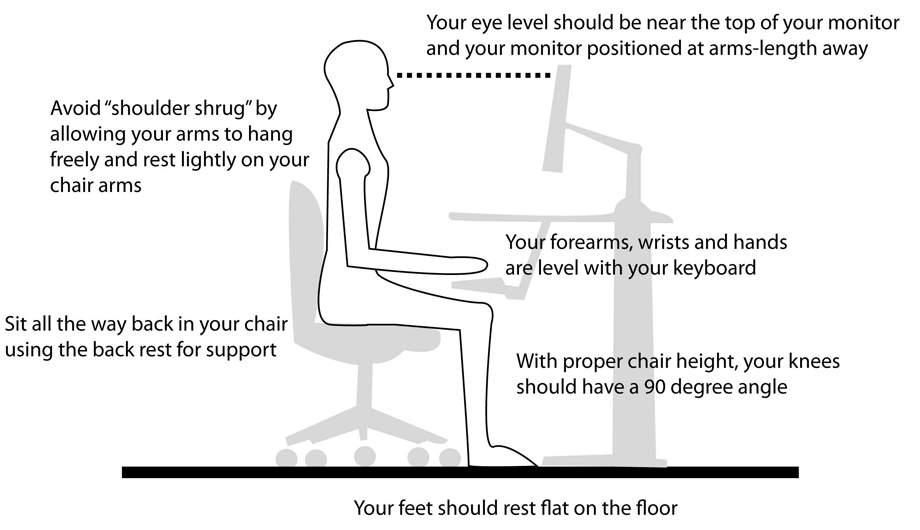“Never be afraid to sit awhile and thinkâ€
One of the most important aspects of good sitting habits is movement. To prevent injury and avoid fatigue, there is one simple method: stand up and adjust your posture!
We all spend hours sitting on desks; when surfing the net, working on a project or researching. These long periods of time will certainly provoke backaches, neck/ shoulder pain or even migraines. Since sitting postures are influenced by 3 important factors: vision, reach and postural support. Make sure that your work area is designed so that your eyes can comfortably see what they need to see, you can comfortably reach what you need, and your chair gives you an appropriate range of comfortable postures. You will find that different tasks require different postures.
Follow these steps to insure a healthy seating position:
Adjust the height. Your feet should rest comfortably on the floor. Adjust the chair height to attain a natural inward curve of the spine and optimize the comfort of your lower back.
Adjust the seat pan and backrest angles. The chair should support an upright position for keyboard activities. If your chair rocks or reclines, consider adjusting the tension to support upright postures for computer and desktop activities.
Adjust the armrests. Armrests, if you have them, should adjust to match your elbow height when your elbows are relaxed at your sides. If your armrests are too long or too high, they will interfere with proper keyboarding position. If your armrests do not adjust for proper fit, consider removing them.
Sitting ergonomics are surely beneficial to your daily productivity. Make sure to alter your working space for better results and most importantly your comfort.










